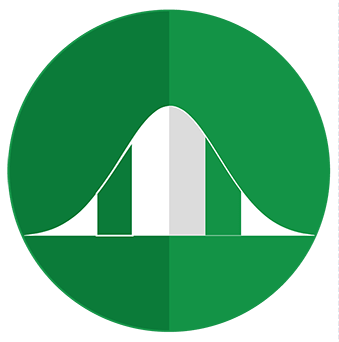As discussed in my last post, the chief goals of performing an in-depth portfolio analysis are to gain insight into ways to optimize a business and its profit margins.
Net profit margin is a percentage calculated by dividing pre-tax net income by revenue. That percentage is an average of each customer’s profit margin, each product/service’s profit margin, each division’s profit margin. Everything a business does is combined into just one number – the net profit margin. As I explained in Purpose 1 of the Seven Purposes of Profit, this one number is quite important and serves as a major “scorecard” for a business.
By definition, some numbers embedded in that “average” net profit margin are above average, and some numbers are below average. We want to look at the extremes – numbers far away from the average – and understand why those extremes occurred. We want more of the extremely good ones, and we want to eliminate the extremely bad ones. That analysis will show the path to greater profit.
If you remember seeing “bell curves” back in high school math class, this concept will be familiar to you. Take a look at the graph shown here. The middle section reflects the bulk of the numbers, and the edges reflect the extremes. The extremes on the positive side are where we want to focus our efforts.

Here’s another very simple way to think about this:
Say we have three products for sale. One of them sells all right, one sells very little, and one sells very well. If we average out all of the sales numbers and only look at the net profit margin, it might seem as if we are doing just fine overall.
If we investigate beyond the average, it becomes obvious that we should eliminate the product that doesn’t sell well and focus more energy on the product that is selling very well — assuming it is profitable.
This example is an oversimplification, but it shows the basic idea.
Focus on what is most profitable, drop what is least profitable, and optimize profit.
What Do We Need For Portfolio Analysis?
We know that we need to be able to pick apart that one number (the net profit margin), and determine how to apply the insights to optimize profits. But how do business owners start this process? How do they slice that number, and what do they need before they start?
Business owners need to make sure that they use accrual accounting, categorize their costs into four categories, and allocation their costs.
Accrual Accounting
To achieve the most accurate insights, use accrual accounting for the portfolio analysis.
In plain terms, accrual accounting means that revenue is recognized when you ship products or perform services, not when you invoice the revenue or collect the revenue. You recognize expenses when you receive the value represented by that expense, not when you pay for it.
Under accrual accounting, expenses should be “matched” to revenue. You record expenses in the same month that you recognize revenue associated with those expenses.
Alternatively, if a business owner can look at a long enough period (e.g. one year) where the differences between cash accounting and proper accrual accounting are minimal, then cash basis accounting will also work.
Cost Categorization
Once you have a handle on accounting, the next step is making sure you categorize or group your costs. Most costs fall into four broad categories: cost of goods sold (COGS); sales and marketing; research and development; and general and administrative.
First, let’s discuss cost of goods sold (COGS) or cost of services. These costs are the direct costs to produce the product or service. For a retailer, the COGS is the cost of the products sold. For a construction company, the cost of services will include the payroll associated with the labor at the construction site, the materials used in construction, subcontractors, and any other expense that relates solely to a specific job.
If your accounting software tracks your products as inventory items, then you should have the information for revenue and COGS by product. For service providers, if your accounting software has a job cost accounting module, then you should have the data for revenue and cost of services by customer.
The other categories of costs include the following:
- Sales and marketing costs – the expenses to acquire customers, including salesperson compensation, advertising, promotion, brand development.
- Research and development costs – the expenses to develop new business offerings (products and services).
- General and administrative costs – essentially all other expenses – sometimes referred to as overhead.
Cost Allocation
To understand the profitability of each element of a portfolio, (customer, product / service, or division), a business owner needs to understand the “drivers” of each of the four cost categories and allocate each cost category or each cost within the category based on what is driving the cost.
Many costs will be allocated based on revenue, but sometimes there are better means of allocation. For example, human resources costs might be allocated based on headcount or total payroll expense. Purchasing costs may be allocated based on revenue, the quantities purchased or the dollar value of purchased items.
In choosing the allocation method, look for a blend of simplicity and accuracy.
The goal is to get a close approximation of cost without incurring a lot of time and effort. After all, as we discussed in our earlier post, life margin is just as key to a successful business as profit margin.
Perform And Examine The Portfolio Analysis
First, determine the time period to use in assembling the financial data.
Select a period that is long enough so that “normal” abnormalities do not distort the results. For example, highly seasonal businesses (such as those in the landscape industry) will want to look at 12-month time periods so that every season of the year gets included. Viewing a period shorter than 12 months could leave out seasons of higher or lower than average profitability. Since we cannot eliminate the seasons, we use 12-month periods to eliminate normal seasonal abnormalities in the data.
I use a spreadsheet to perform the analysis. I also make sure that I document the rationale for allocating common costs so that I can repeat this process efficiently in 6-12 months.
Once the analysis is complete, we want to investigate it. We want to understand why the extremes are extreme, so we look for patterns and ask lots of questions. Asking why multiple times is a great way to find the cause of the extremes.
Examining the portfolio analysis with a team will provide different perspectives. It will also help the team members learn to think strategically about business offerings and customers.
Finally, you will need to characterize the extremes. Here are some examples:
Example 1: Customers
Customers
“Large jobs are more profitable than small jobs because the start-up time for a small job is almost as much as for a large job.”
“Large orders are more profitable than small orders because shipping costs are lower as a percentage of revenue.”
Here, note that we found a common characteristic of the extremes (e.g., large or small) and that we determined the reason for the lower level of profitability. Once we discover the root cause, we can be more confident in making changes based on the portfolio analysis.
In addition to the more quantitative elements of analyzing customer profitability noted above, there may be some qualitative characteristics that make certain customers more profitable.
For example, more profitable customers may be willing to pay for the totality of your offer. In other words, they may value your customer service and be willing to pay more because of it. These customers are willing to pay for both your product or service and your customer service.
Here’s a real-world example:
Why do Amazon’s customers buy more and more stuff from Amazon?
Perhaps it is the price in some cases, but I suspect that for most, it is the convenience of ordering, the speed of delivery, the reliability of delivery timing, and the free delivery.
Example 2: Division
Division
“That division loses money because of the highly competitive nature of its products. The products have become commodities; therefore, the profit margin is very low.”
Unfortunately, this company has a strategic choice to make – become the most efficient provider of commodity products or eliminate commodity products and focus on products where the company adds value.
Example 3: Products/Services
Products / Services
“The poorly performing jobs had a large proportion of a specific service. We are not good at performing that service and have numerous warranty claims associated with that service.”
“These products are not very profitable because the return rate is high. The return rate is high because the product has a much higher defect rate than our other products. The defect rate is high because a different factory makes that product and the quality control is poor.”
Note that this example shows multiple answers to a series of questions, each starting with “Why.” The next question would be “Why is the factory’s quality control poor?”
These “why” questions would continue until we got to the root issue and could formulate actions to address the root issue.
Moving Forward
Once you’ve gotten to the root issues in all areas of the portfolio analysis, the obvious next step is to apply those insights to your business.
If this is the first time you have ever done portfolio analysis, it may be tempting to try to solve every single issue that you discover, but that is not the most efficient use of your time and energy as a business owner.
Focus on the extremes and think critically about the best actions to take in your business so that you can eliminate problem areas and focus on winners.
Next week, I’ll discuss case studies where smart decisions based on portfolio analysis yielded massive improvement.
The path to greater life margin is greater profit margin. The path to greater profit margin is paved with action informed by data. Portfolio analysis is an important part of the pavement.
Read the Whole Series
Part 1 – Craving Business Sanity? Get a Portfolio Analysis
Part 2 (this post) – What is Measured in a Portfolio Analysis

